Pachycephalosauria
|
The Marginocephalia is a clade of dinosaurs characterized by having a ridge or shelf at the back of the skull. There are two subroups, the Pachycephalosauria and the Ceratopsia. The pachycephalosaurs are the smaller group. They are bipedal and have a thickened skull roof that may be either flat or domed and is surrounded by small spikes.
Pachycephalosaurus wyomingensis is the largest species of pachycephalosaur.
Taxonomy: Ornithischia, Marginocephalia, Pachycephalosauria
North America
Late Cretaceous Period, 70-66 Ma
Museum of Ancient Life, Utah
|
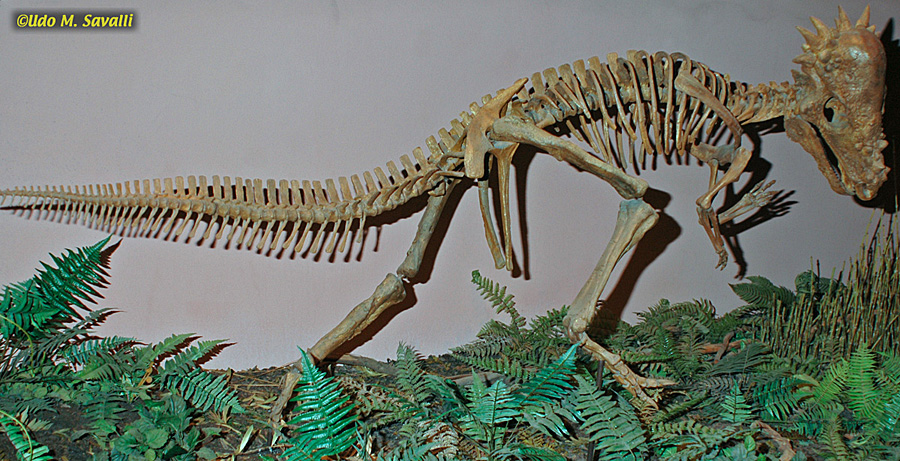
|
|
|
Pachycephalosaurus wyomingensis.
Taxonomy: Ornithischia, Marginocephalia, Pachycephalosauria
Hell Creek Formation, Harding Co., South Dakota
Late Cretaceous Period, 66 Ma
Dinosaur Resource Center, Colorado
|
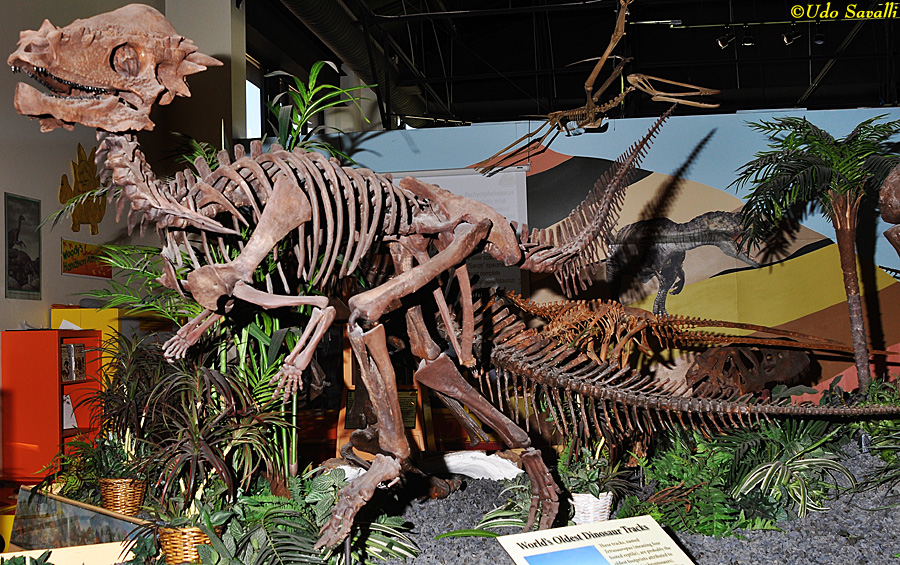
|
|
|
These three pachycephalosaur skulls have been named (left to right): Pachycephalosaurus, Stygimoloch, & Dracorex since they differ in the length of their skull horns and shape of the top of the skull, from very domed to completely flat. Some paleontologists have suggested that all three belong to the same species (Pachycephalosaurus, since it was named first) and instead represent different ages, with Dracorex (right) a juvenile, Stygimoloch a sub-adult, and Pachycephalosaurus (left) the full adult.
Taxonomy: Ornithischia, Marginocephalia, Pachycephalosauria
Western North America
Late Cretaceous Period
Museum of the Rockies, Montana
|

|
|
|
Life model of of fighting "Stygimolochs" (subadult Pachycephalosaurus).
Taxonomy: Dinosauria; Ornithischia; Marginocephalia; Pachycephalosauridae
Late Cretaceous Period
Denver Museum of Science & Nature
|
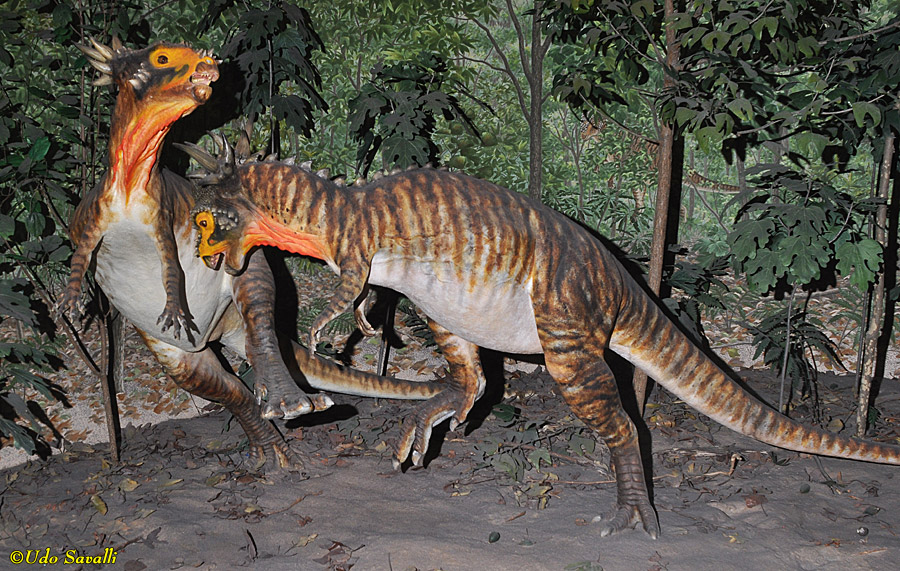
|
|
|
Cast of Prenocephale prenes upper skull.
Taxonomy: Ornithischia, Marginocephalia, Pachycephalosauria
Nemegt Formation, Mongolia
Late Cretaceous Period, Maastrichtian Stage
Black Hills Institute Museum, South Dakota
|
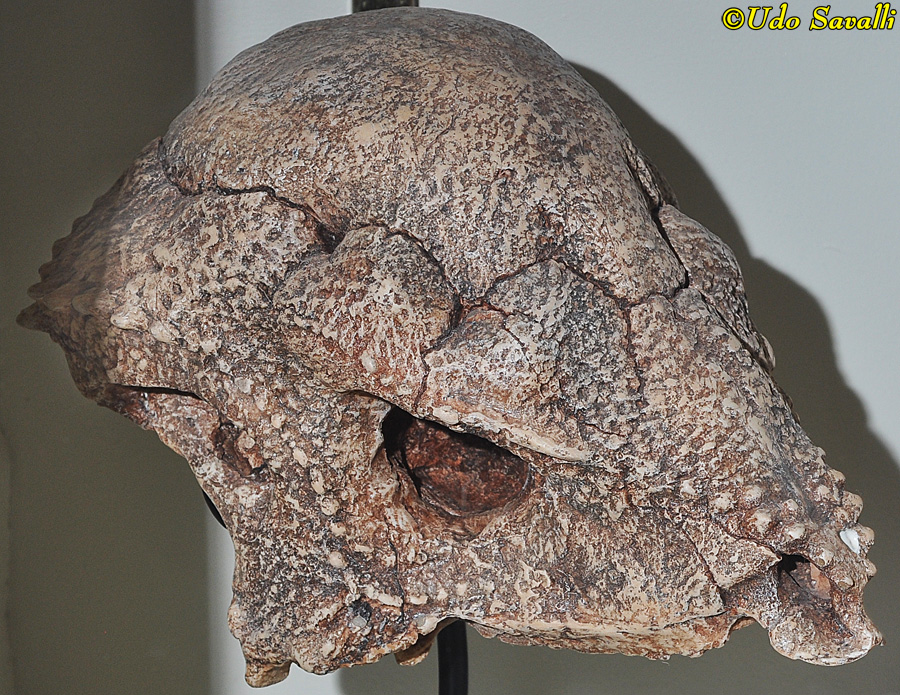
|
|
|
Stegoceras sp. skull cast.
Taxonomy: Ornithischia, Marginocephalia, Pachycephalosauria
Dinosaur Park Formation, Alberta
Late Cretaceous Period
Museum of the Rockies , Montana
|
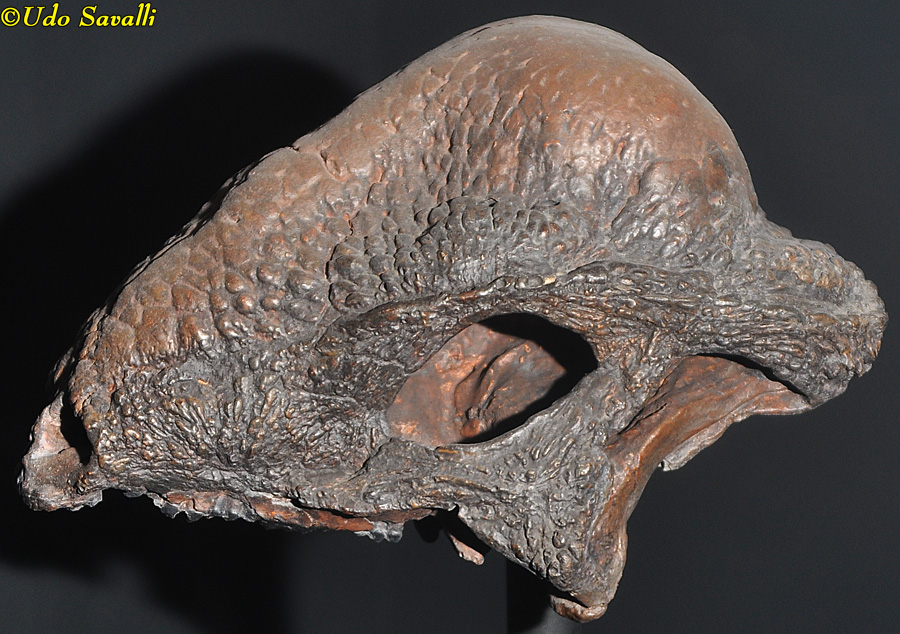
|
|
|
Life model of the head of Stegoceras validum.
Taxonomy: Dinosauria; Ornithischia; Marginocephalia; Pachycephalosauridae
Late Cretaceous Period, 77-74 Ma; Western North America
Dinosaur Resource Center, Colorado
|
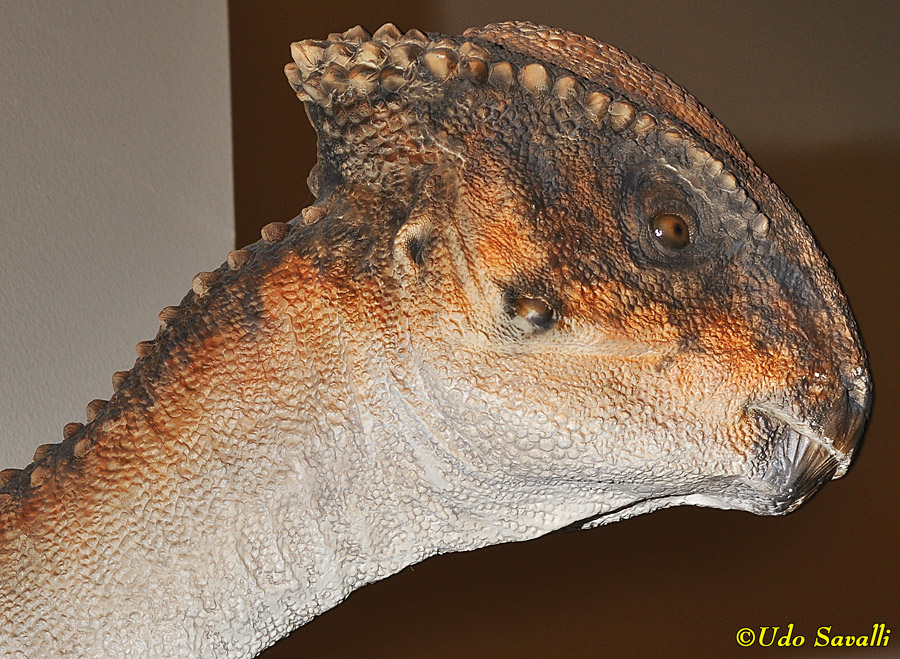
|
|
Ceratopsia
|
The Ceratopsia are commonly called the horned dinosaurs, although not all have horns. They do all have a narrow parrot-like beak at the front and an extension of the back of the skull called a shield or frill. Their cheek bones (jugals) also stick out to form a horn-like protrusion at their cheek.
The most basal ceratopsians, such as these Psittacosaurus sp., are small, bipedal animals that lack horns and have only a minimal frill.
Taxonomy: Ornithischia, Marginocephalia, Ceratopsia, Psittacosauridae
Asia
Middle Cretaceous Period, 130-100 Ma
Museum of Ancient Life, Utah
|
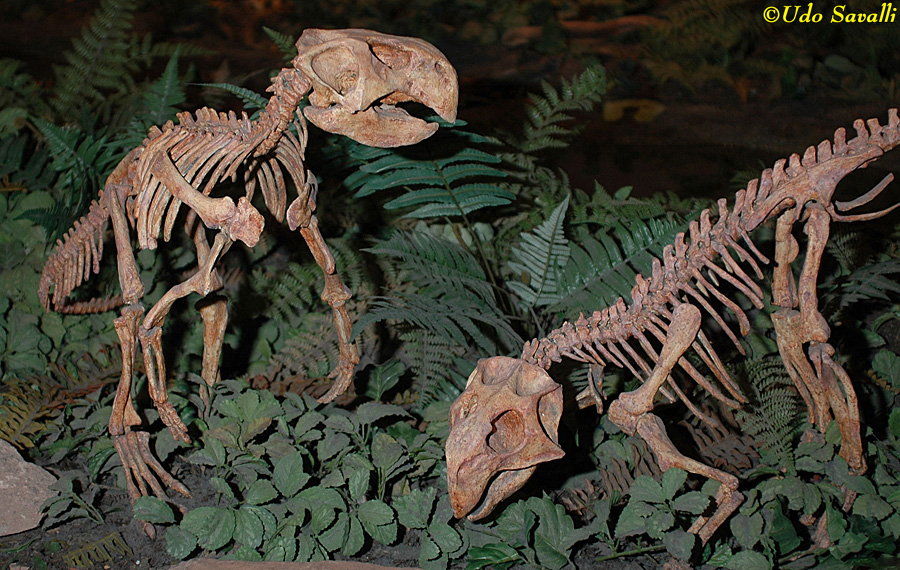
|
|
|
Psittacosaurus mongoliensis are among the most common of dinosaur fossils
Taxonomy: Ornithischia, Marginocephalia, Ceratopsia, Psittacosauridae
Asia
Cretaceous Period, 110-98 Ma
Wyoming Dinosaur Center
|
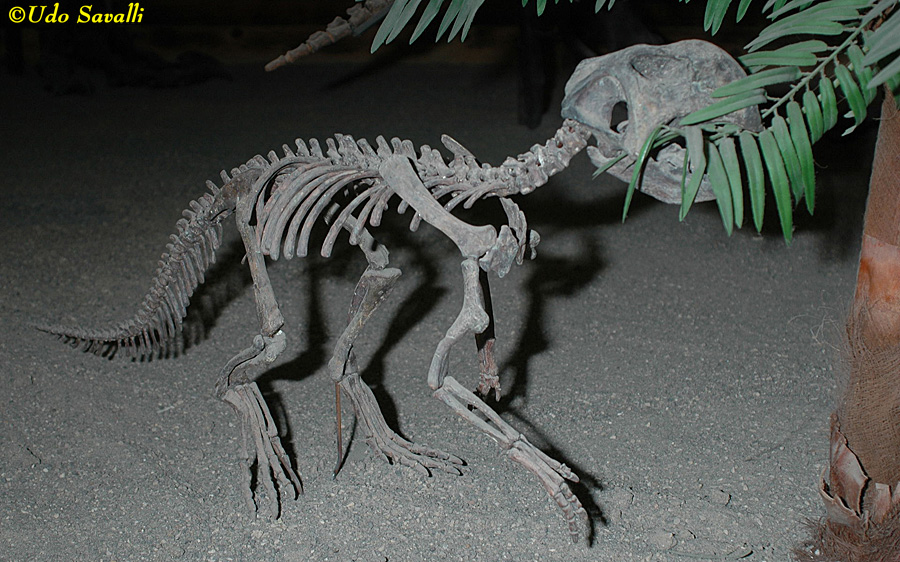
|
|
|
Cast of the famous Psittacosaurus sp. fossil that includes soft tissue preservation, skin impressions, a row of filaments or quills extending from the tail and even color information.
Taxonomy: Ornithischia, Marginocephalia, Ceratopsia, Psittacosauridae
Yixian Formation, Jehol Group, Liaoning Prov., China
Early Cretaceous Period, Aptian Stage
Black Hills Institute Museum, South Dakota
|
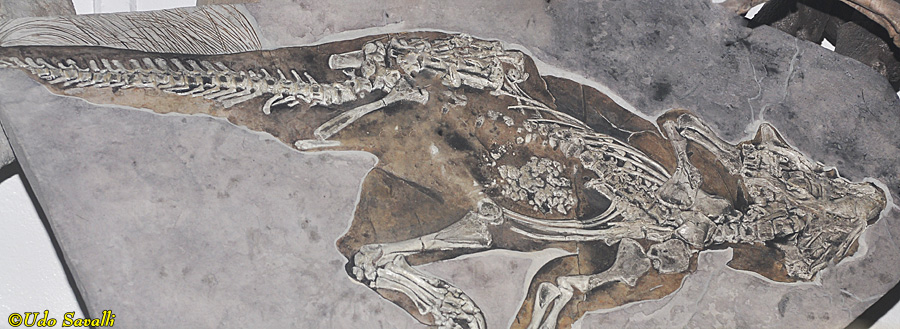
|
|
|
Cast of a Psittacosaurus sp. nest with young.
Taxonomy: Ornithischia, Marginocephalia, Ceratopsia, Psittacosauridae
Black Hills Institute Museum, South Dakota
|
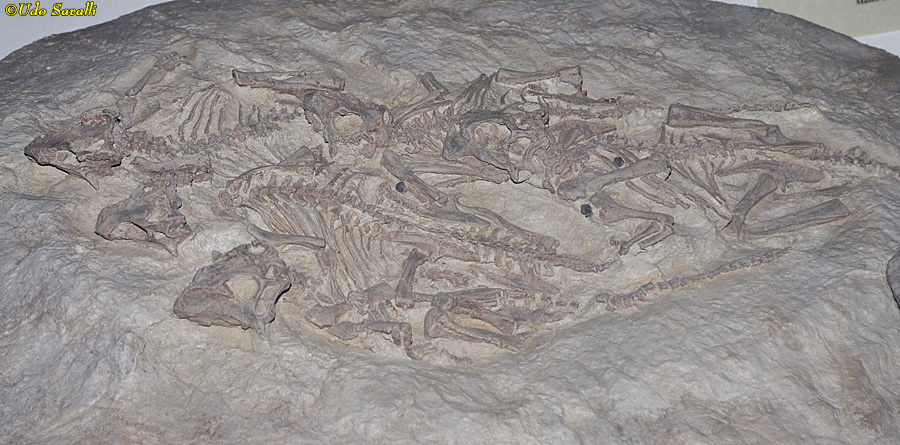
|
|
|
Life model of Psittacosaurus sinensis adult with young.
Taxonomy: Dinosauria; Ornithischia; Marginocephalia; Ceratopsia; Psittacosauridae
Early Cretaceous Period, 130-125 Ma; China
Fernbank Museum of Natural History, Georgia
|
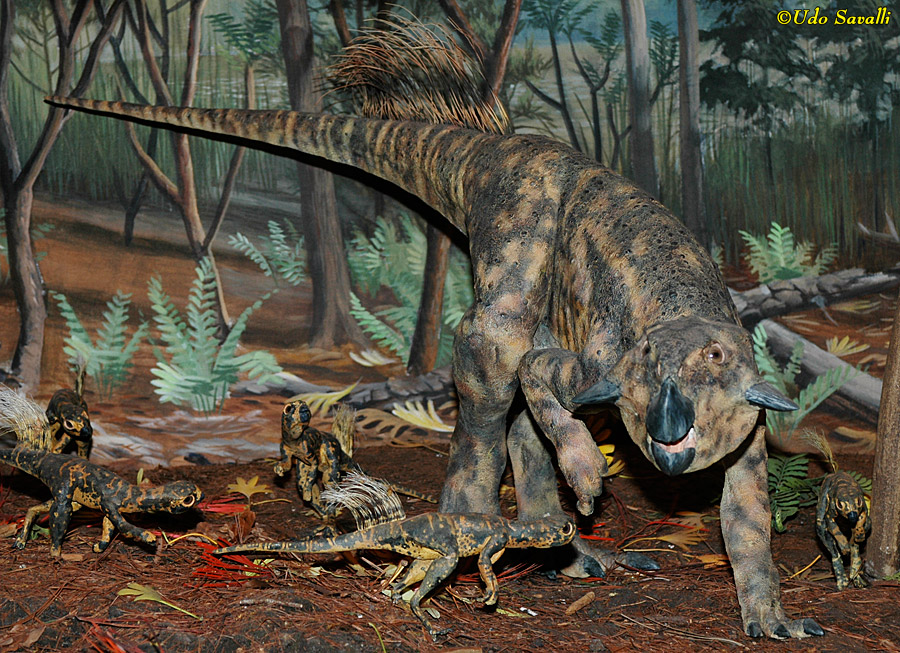
|
|
|
Protoceratops andrewsi is also a basal ceratopsian, but it is more derived than Psittacosaurus. It is quadrupedal, with a proportionately much larger head and a large frill, although it still lacks horns.
Taxonomy: Ornithischia, Marginocephalia, Ceratopsia, Protoceratopsidae
Mongolia
Late Cretaceous Period, 75 Ma
Wyoming Dinosaur Center
|
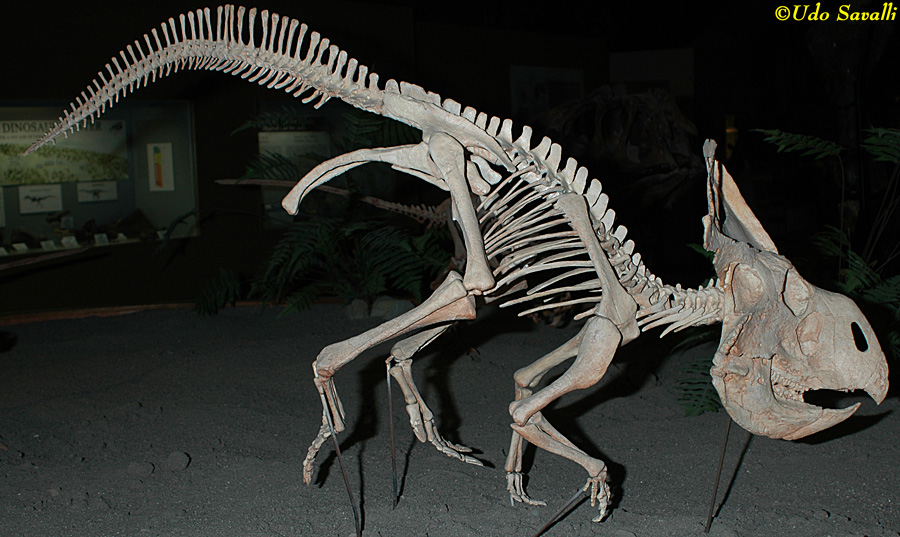
|
|
|
Fossil of Protoceratops andrewsi.
Taxonomy: Ornithischia, Marginocephalia, Ceratopsia, Protoceratopsidae
Asia
Late Cretaceous Period, 83-70 Ma
Museum of Ancient Life, Utah
|
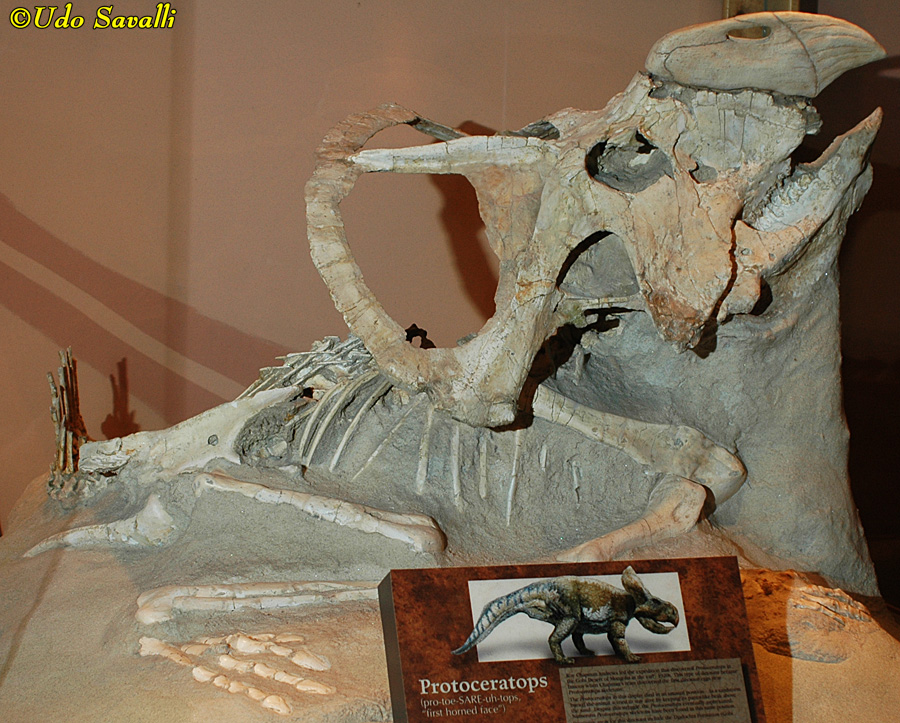
|
|
|
Zuniceratops christopheri (reconstructed skeleton) was a transitional species between the more basal forms such as Protoceratops and the larger, more derived Ceratopsidae. It was one of the first ceratopsians to evolve brow horns.
Taxonomy: Ornithischia, Marginocephalia, Ceratopsia
Moreno Hill Formation, New Mexico
Late Cretaceous Period, 91 Ma
Arizona Museum of Natural History
|
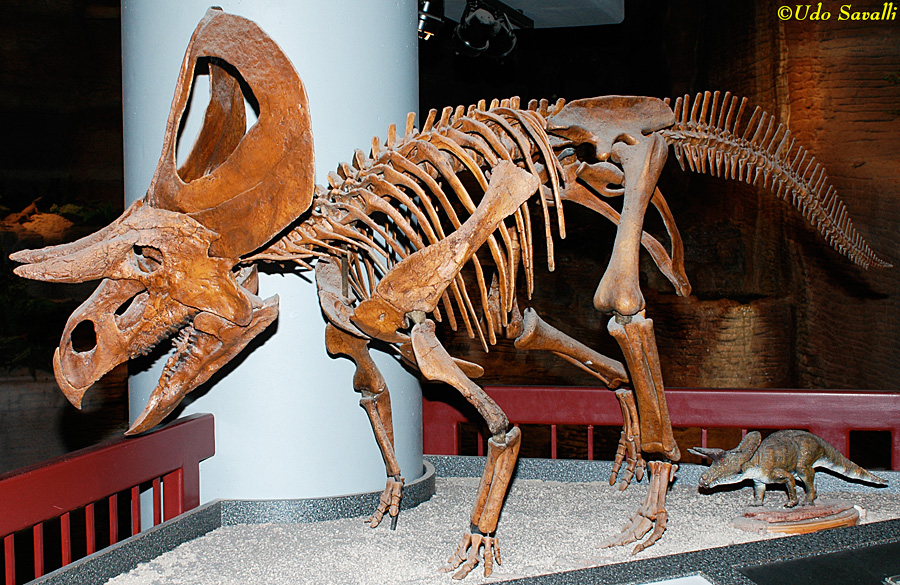
|
|
|
The family Ceratopsidae are the most derived ceratopsians. They are large-sized and have a large shield or frill at the back of their skull. The shape of the shield and number and arrangments of horns is quite variable even among closely related species and probably functioned as social status signals or in competition for mates.
Chasmosaurus sp. is a fairly typical ceratopsid. The openings in the shield are fairly typical in species with exceptionally large frills and probably serve to reduce the weight.
Taxonomy: Ornithischia, Marginocephalia, Ceratopsia, Ceratopsidae
North America
Late Cretaceous Period, 77-76 Ma
Museum of Ancient Life, Utah
|
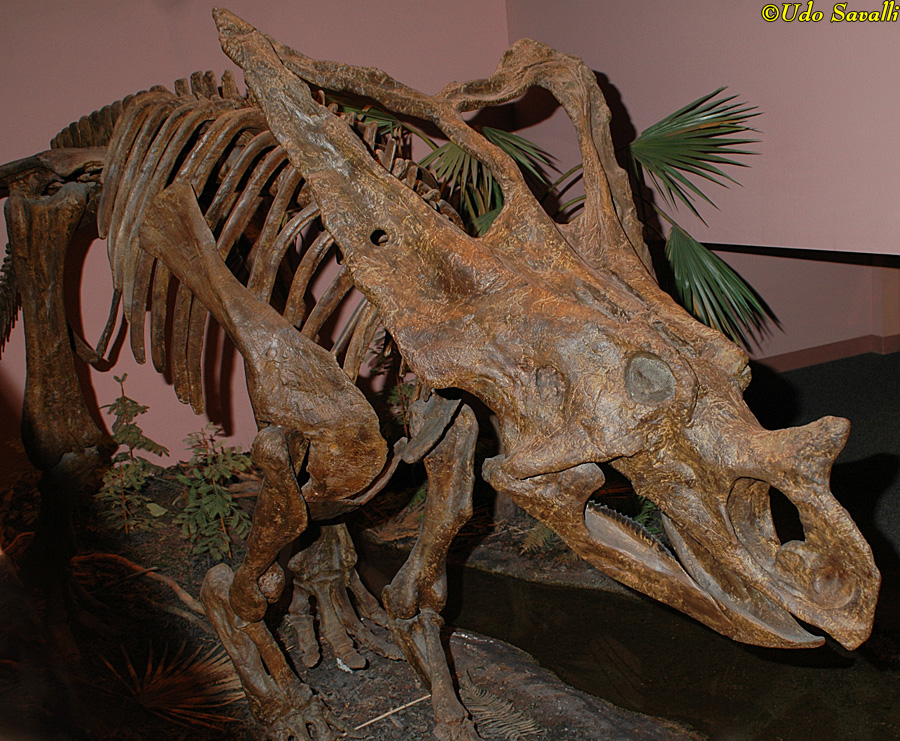
|
|
|
Medusaceratops lokii was described in 2010, based on fossils from a large bone bed, suggesting they lived in groups.
Taxonomy: Ornithischia, Marginocephalia, Ceratopsia, Ceratopsidae
Montana
Late Cretaceous Period, 77 Ma
Wyoming Dinosaur Center
|
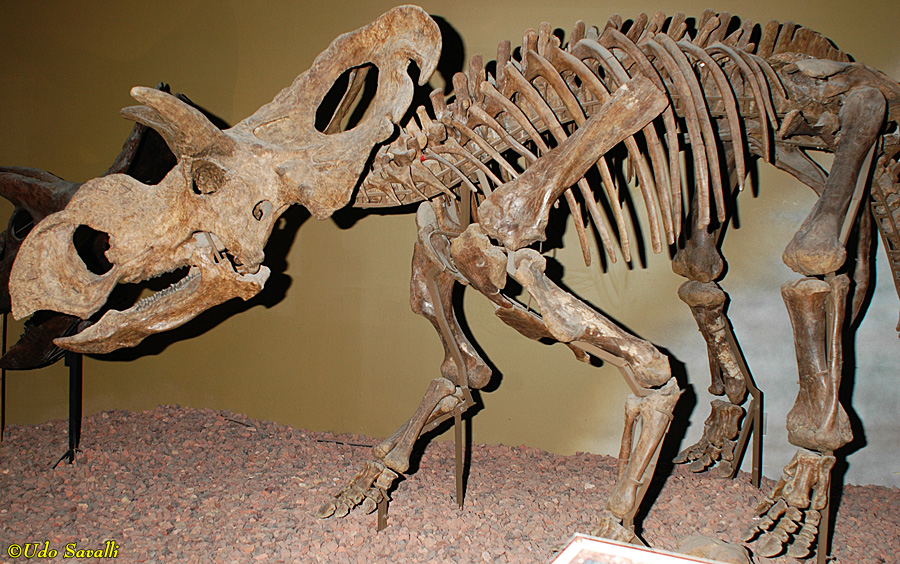
|
|
|
Pentaceratops sternbergii skull without additional reconstruction.
Taxonomy: Ornithischia, Marginocephalia, Ceratopsia, Ceratopsidae
Kirtland Formation, San Juan Co., New Mexico
Late Cretaceous Period, 76-73 Ma
New Mexico Museum of Natural History & Science
|
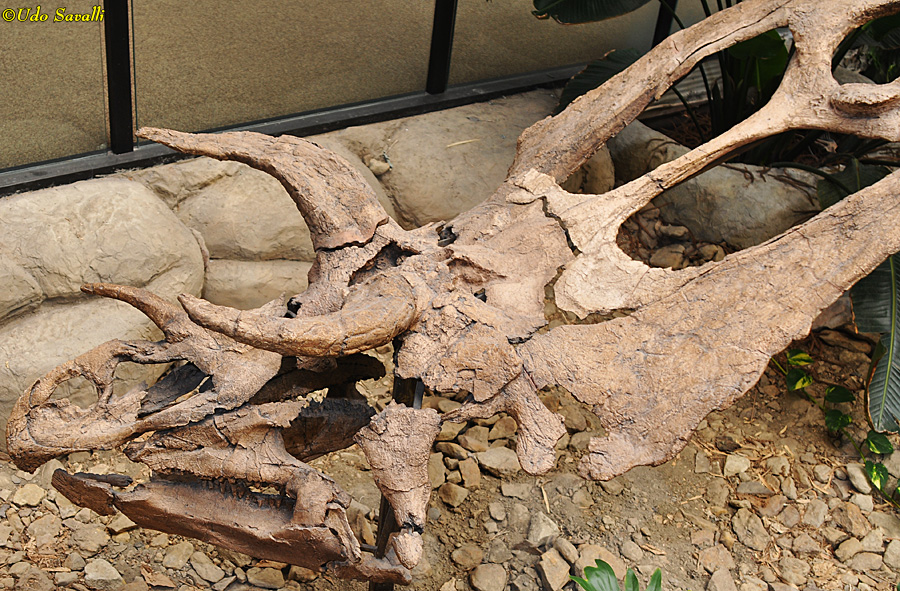
|
|
|
Nasutoceratops titusi was described in 2013.
Taxonomy: Ornithischia, Marginocephalia, Ceratopsia, Ceratopsidae
Southern Utah
Late Cretaceous Period, Campanian stage, 76-75 Ma
Arizona Museum of Natural History
|
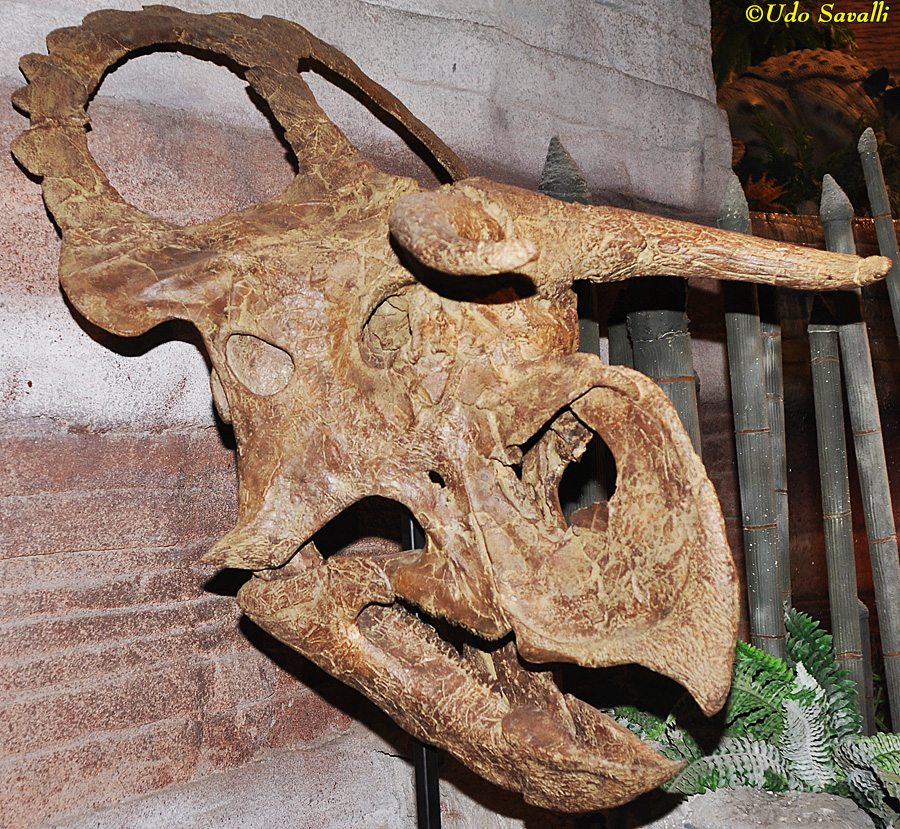
|
|
|
Styracosaurus albertensis
Taxonomy: Ornithischia, Marginocephalia, Ceratopsia, Ceratopsidae
Alberta
Late Cretaceous Period, 76-74 Ma
Los Angeles Museum of Natural History
|
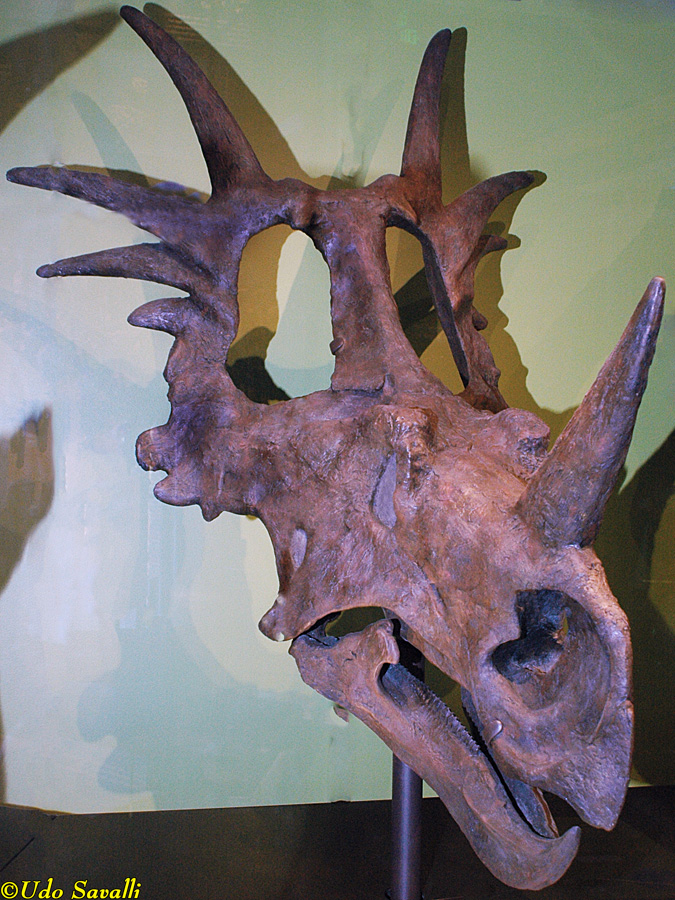
|
|
|
Spiclypeus shipporum was described in 2016.
Taxonomy: Ornithischia, Marginocephalia, Ceratopsia, Ceratopsidae
Judith River Formation, Fergus Co., MT
Late Cretaceous Period, Campanian Stage
Black Hills Institute Museum, South Dakota
|
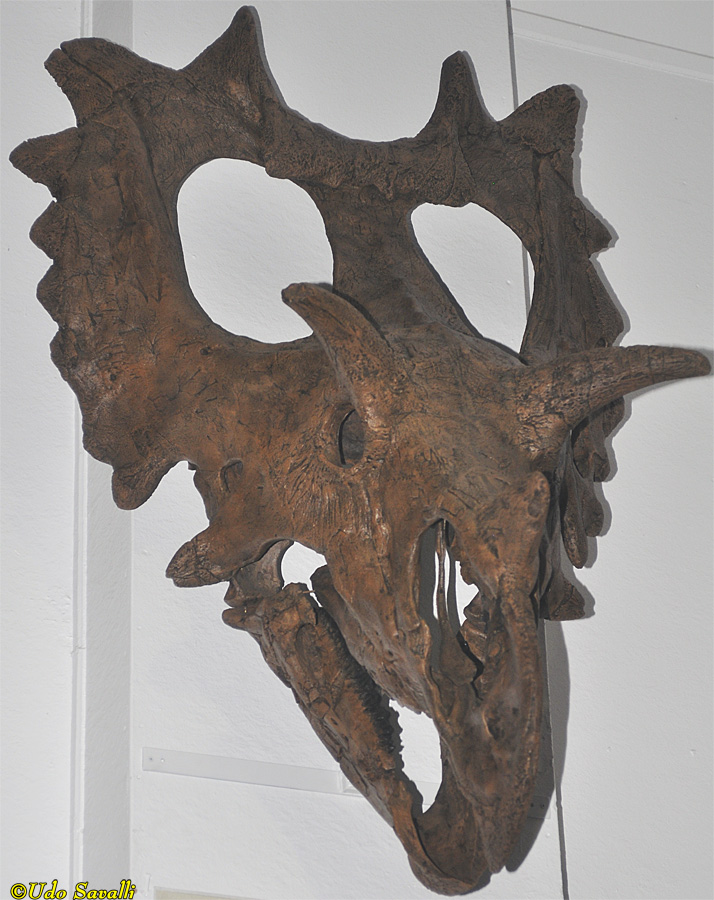
|
|
|
Achelousaurus horneri actual fossil holotype (the specimen used to name and officially designate the species). Gray areas are reconstucted.
Taxonomy: Ornithischia, Marginocephalia, Ceratopsia, Ceratopsidae
Glacier Co., Montana
Late Cretaceous Period
Museum of the Rockies, Montana
|
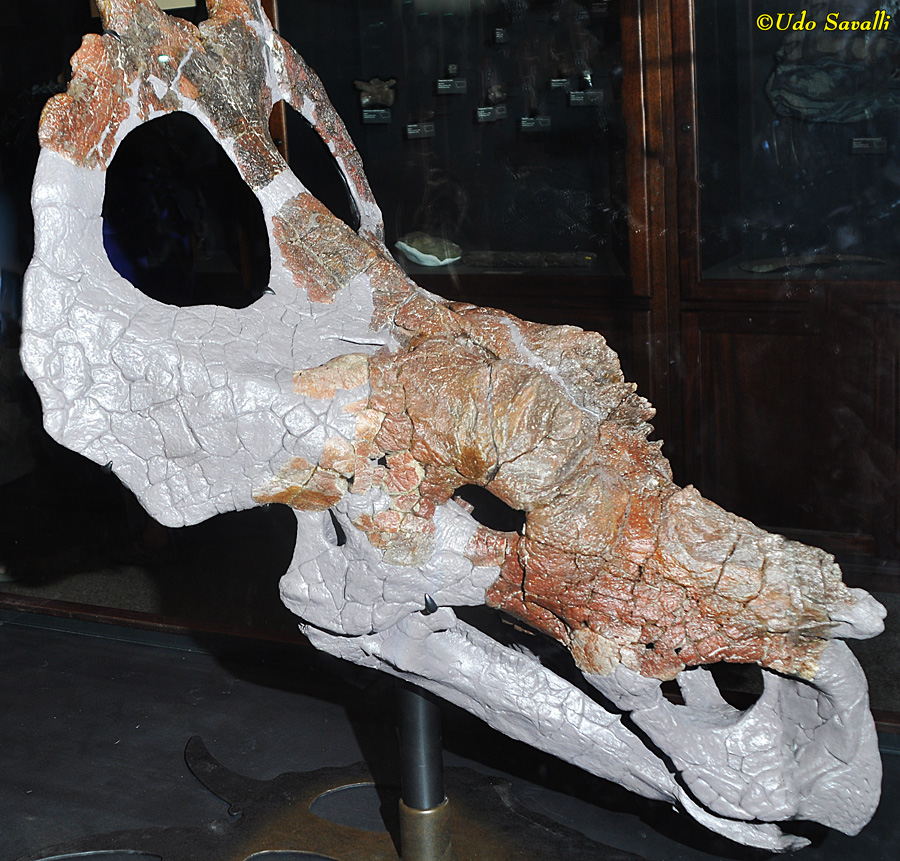
|
|
|
Einiosaurus procurvicornis.
Taxonomy: Ornithischia, Marginocephalia, Ceratopsia, Ceratopsidae
Late Cretaceous Period, 83-70 Ma
Montana
Los Angeles Museum of Natural History
|
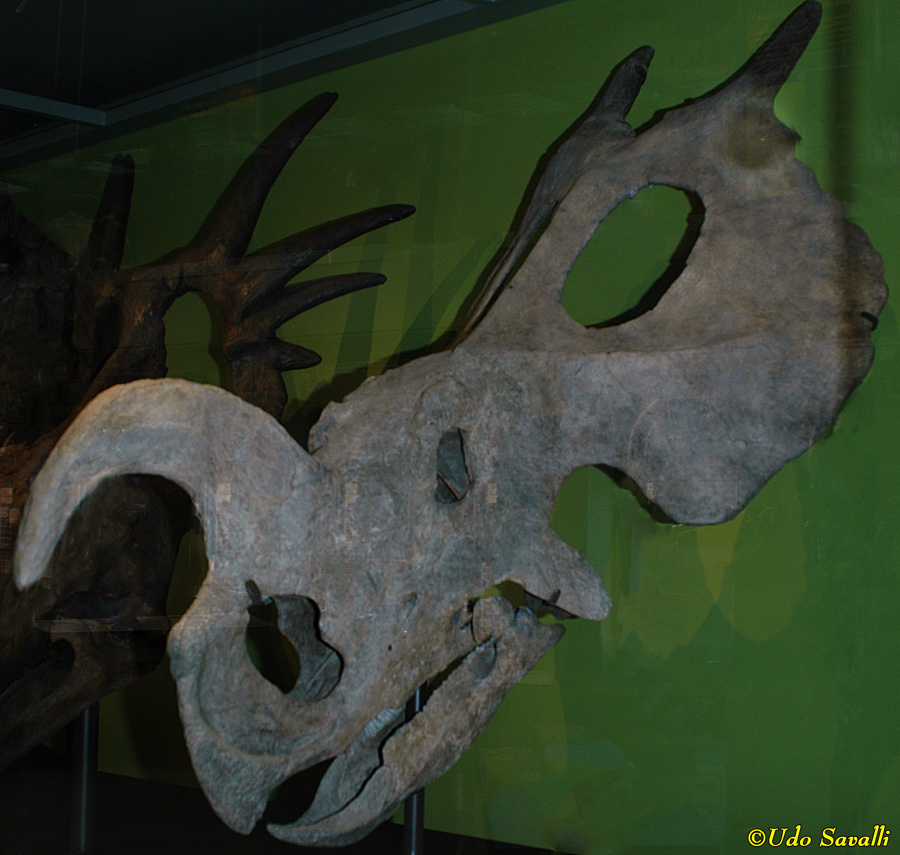
|
|
|
Torosaurus sp. is a close relative of Triceratops, but has a larger shield.
Taxonomy: Ornithischia, Marginocephalia, Ceratopsia, Ceratopsidae
Fergus Co., Montana
Late Cretaceous Period, 68-65 Ma
Museum of the Rockies, Montana
|
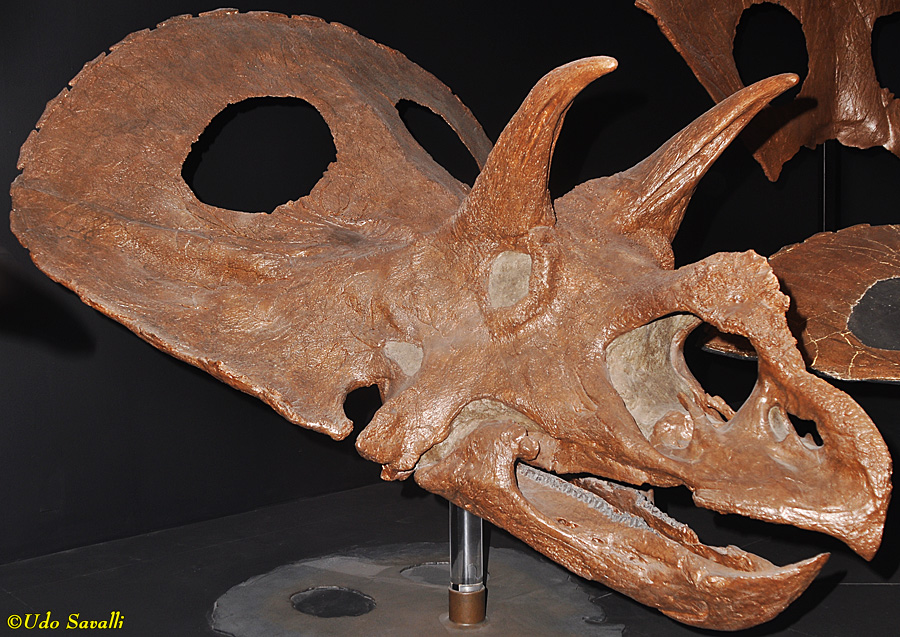
|
|
|
Two valid species of Triceratops have been named. T. prorsus can be recognized by a longer nose horn and shorter snout; it is found in slightly younger strata than T. horridus (below).
Taxonomy: Ornithischia, Marginocephalia, Ceratopsia, Ceratopsidae
Late Cretaceous Period, 66 Ma
Los Angeles Museum of Natural History
|
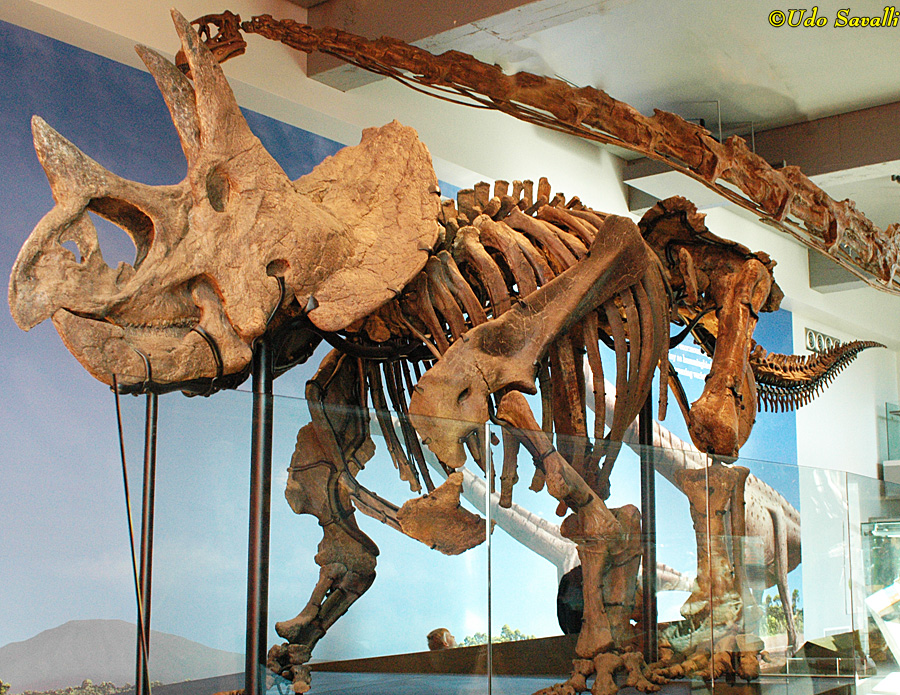
|
|
|
T. horridus is the older, and thus ancestral, species of Triceratops. It has a small nose horn and longer rostrum (snout) than T. prorsus (above). This probably reflects evolutionary change in a single lineage.
Taxonomy: Ornithischia, Marginocephalia, Ceratopsia, Ceratopsidae
Late Cretaceous Period, 68 Ma
Wyoming Dinosaur Center
|
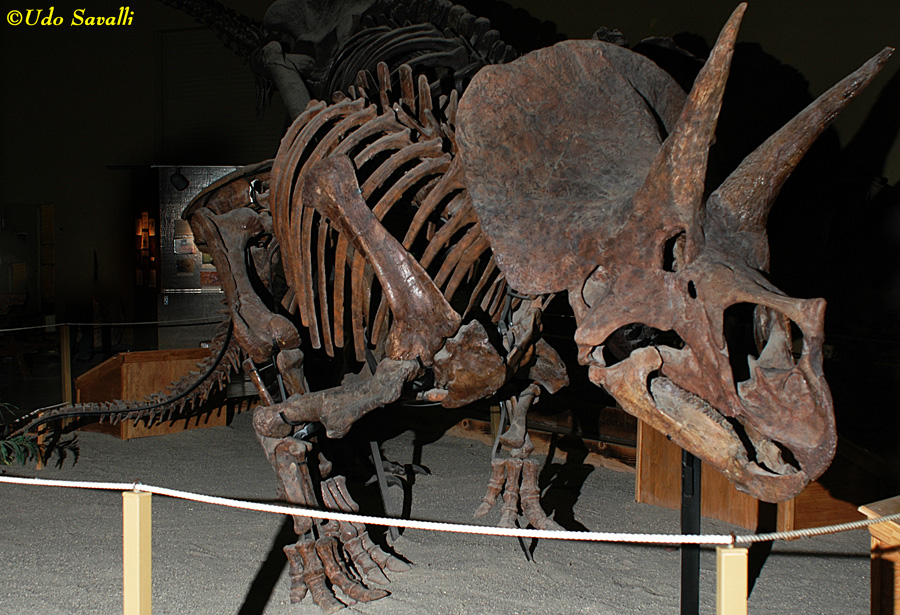
|
|
|
Skull growth sequence in Triceratops, from a 1-year old baby (upper left) to mature adult (lower right). Skulls are not to scale. Note the change in horn size and orientation (from pointing up to pointing forward), the change in size and shape of the frill, and the formation and later fusion/absorption of the triangular epoccipital bones that line the frill (as well as more typical changes to skull shape and relative eye size).
Taxonomy: Ornithischia, Marginocephalia, Ceratopsia, Ceratopsidae
Montana
Late Cretaceous Period, 68-66 Ma
Museum of the Rockies, Montana
|
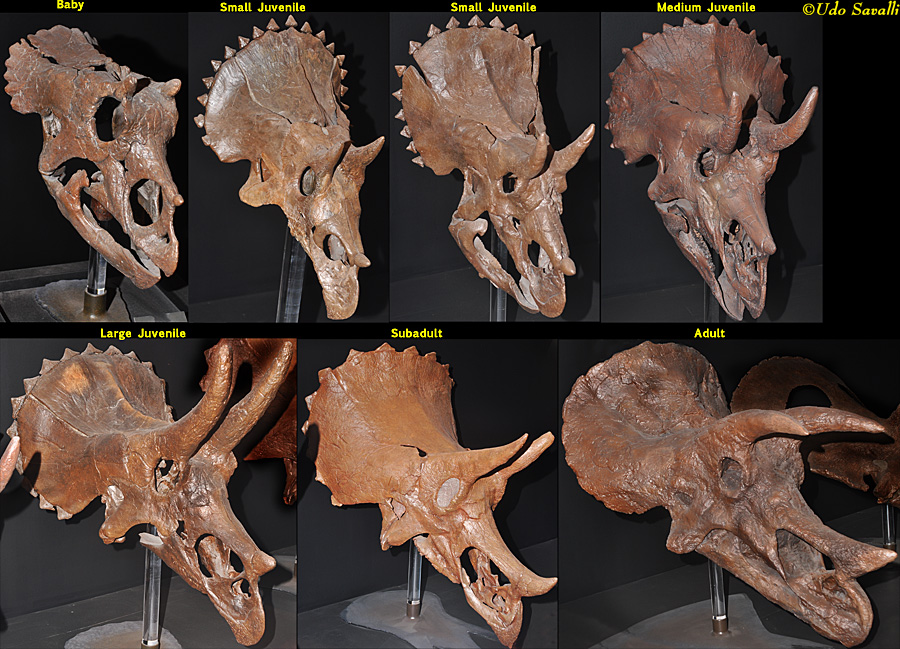
|
|
|
Triceratops sp. skin impression (cast).
Taxonomy: Ornithischia, Marginocephalia, Ceratopsia, Ceratopsidae
Late Cretaceous Period
Black Hills Institute Museum, South Dakota
|
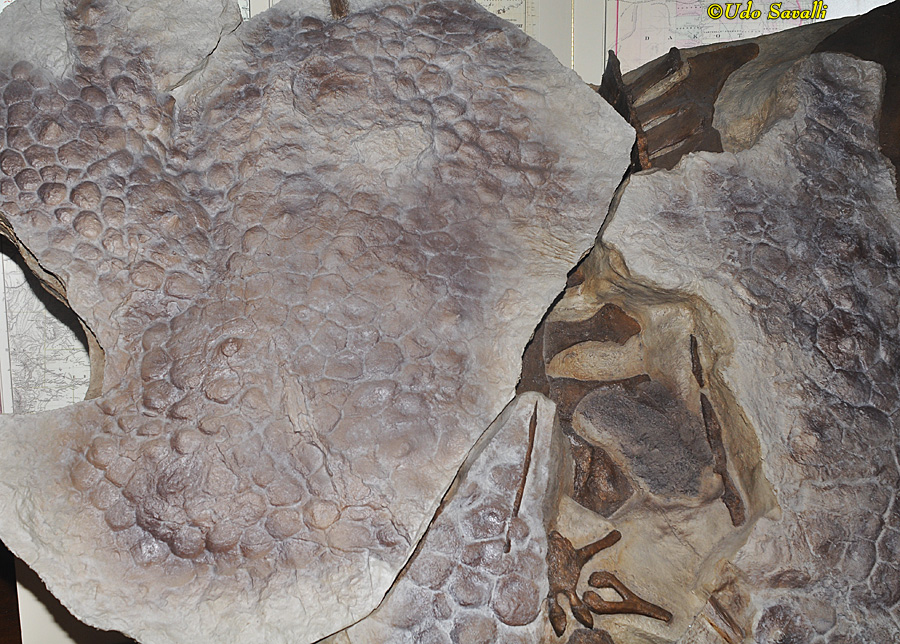
|
|
|
Triceratops sp. skin impression (real fossil).
Taxonomy: Ornithischia, Marginocephalia, Ceratopsia, Ceratopsidae
Lance Formation, Niobrara Co., WY
Late Cretaceous Period, Maastricthian Stage
Black Hills Institute Museum, South Dakota
|
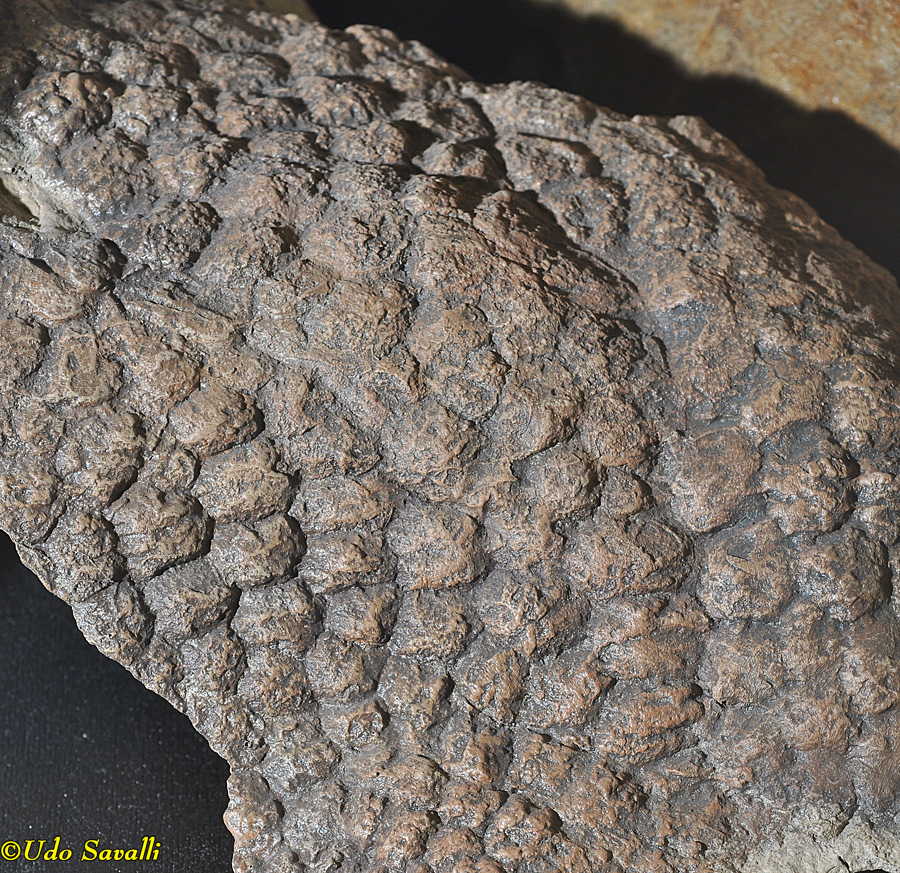
|
|
|
Life model of Pentaceratops sp.
Taxonomy: Dinosauria; Ornithischia; Marginocephalia; Ceratopsia; Ceratopsidae
Late Cretaceous Period
Arizona Museum of Natural History
|
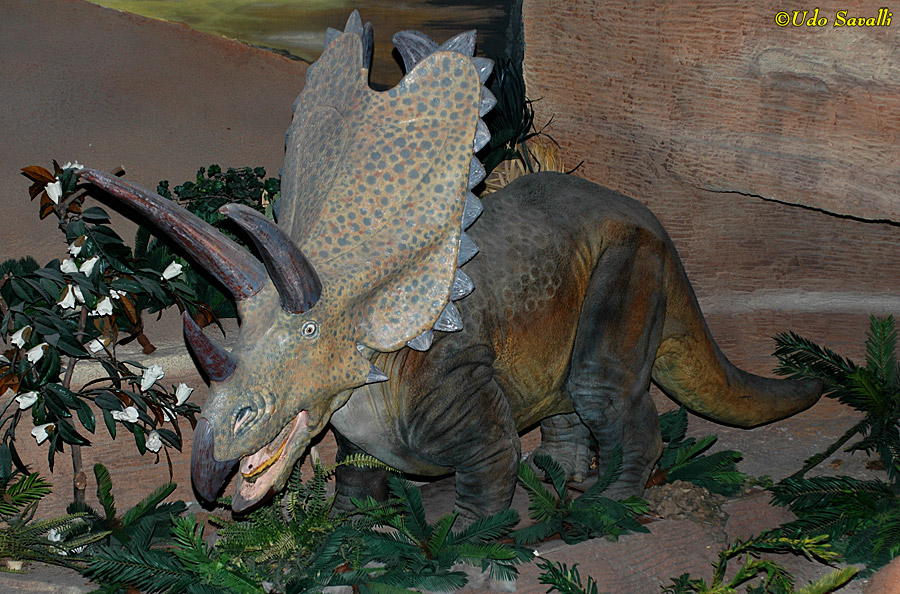
|
|
|
Life model of Styracosaurus sp.
Taxonomy: Dinosauria; Ornithischia; Marginocephalia; Ceratopsia; Ceratopsidae
Late Cretaceous Period
Dinosaur Resource Center, Colorado
|
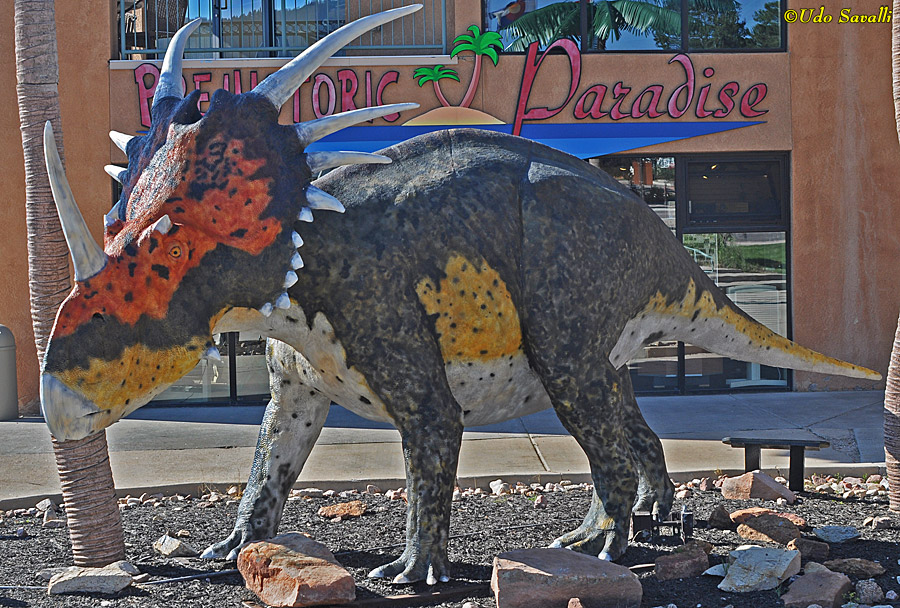
|
|
|
Life model of Nasutoceratops titusi.
Taxonomy: Dinosauria; Ornithischia; Marginocephalia; Ceratopsia; Ceratopsidae
Late Cretaceous Period, 76-75 Ma; Utah
Arizona Museum of Natural History
|
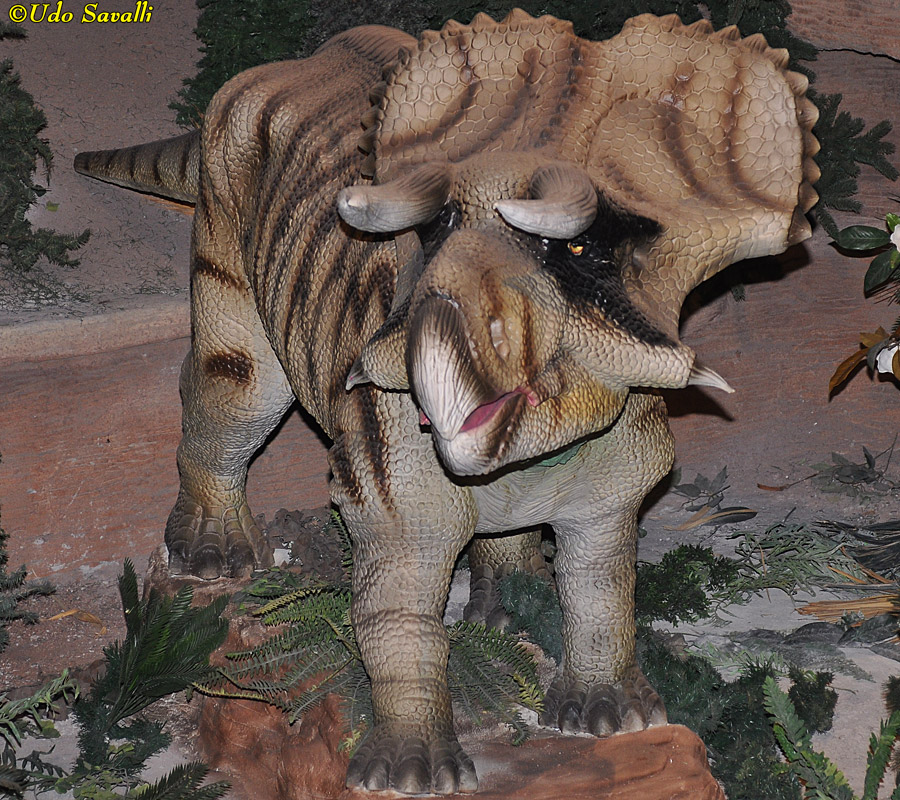
|
|
|































